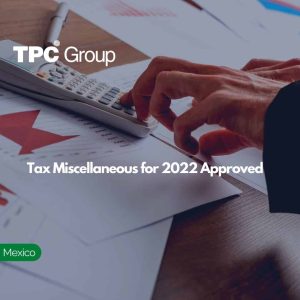The management of income allocable to permanent establishments and foreign branches in Colombia is a key challenge within the international tax landscape.
Within the framework of the adoption of the OECD guidelines, the Colombian tax authority adopted the concepts proposed by the former on the income allocation to permanent establishments (PE) and branches in its internal regulations as of 2012.
Thus, this item will answer the following questions: What is a permanent establishment? What is the income allocation and, consequently, what should the income allocation study contain? And finally, what is the difference between the income allocation study and the Transfer Pricing reporting, given that both apply the Arm’s Length Principle?
As defined by the DIAN (Dirección de Impuestos y Aduanas Nacionales – National Tax and Customs Directorate), from the tax perspective, it states:
ARTICLE 20-1. PERMANENT ESTABLISHMENT.[1] Notwithstanding the terms of the double taxation conventions signed by Colombia, a permanent establishment is a fixed place of business located in the country through which a foreign company, either a corporation or any other foreign entity, or an individual without residence in Colombia, as applicable, performs its activity totally or partially.
This concept includes branches of foreign companies, agencies, bureaus, factories, workshops, mines, quarries, oil and gas wells, or any other place of extraction or exploitation of natural resources, among others.
In addition, a permanent establishment in the country shall be considered when a person, regardless of an independent agent, acts on behalf of a foreign company and has or habitually exercises in the national territory powers that entitle him/her to conclude binding procedures or contracts for the company. Such foreign enterprise shall be considered to have a permanent establishment in the country regarding the activities that such person performs for the foreign enterprise unless the activities of such person are limited to those mentioned in the second paragraph hereof.
Hence, we are going to answer the main question here and others arising throughout.
What is the income allocation, and consequently, what does the study of income allocation to permanent establishments and branches required by the Colombian tax authority contain?
Income allocation is the process by which income and expenses are assigned to a specific entity or establishment to determine the tax burden associated with that entity. This concept is particularly relevant in the international tax field, where companies operate in several jurisdictions and must allocate their profits and costs among the different parts of the organization, including PEs.
Thus, income allocation determines how much of the profits and expenses generated by a multinational enterprise correspond to a specific location, such as a branch office, considered a permanent establishment in a given country.
The income allocation is based on the Arm’s Length principle, i.e., it aims the taxed income is similar to a functional entity separated from the parent company considering the PE, analyzing it, regardless of the general result of the company and recognizing in the PE the capacity to enter into agreements with third parties, related parties, and even the parent company.
Conversely, what could result if a permanent establishment is considered a functionally separate entity?
The denomination may seem simple if it is limited to the identification of the functions and consequent allocation of assets and risks allocable to the PE based on the relevant economic characteristics to subsequently determine the income and expenses established by the PE, according to the economic activity performed (two-step methodology or Authorized OECD Approach). Nevertheless, the complexity of being supervised by external expert advisors lies in not only documenting but also establishing valid criteria for a correct allocation based on the Arm’s Length Principle, which is the main axis of Transfer Pricing.
Regarding the income allocation, the Colombian regulations state in Chapter 14 of Decree 1625 of 2016 Tax Matters:
“ARTICLE 1.2.1.14.1. Income and occasional gains allocable to permanent establishments and branches. According to the provisions of Article 20-2 of the Tax Statute and Article 66 of Law 2010 of 2019, the income and occasional gains allocable to a permanent establishment or branch in Colombia are those that the permanent establishment or branch would have obtained, under the Arm’s Length Principle, if it were an independent enterprise separate from the enterprise of which it is a part, whether such income and occasional gains derive from facts, acts, or transactions between the permanent establishment or branch in Colombia with another enterprise, individual, or corporation, or from its internal transactions with other parts of the same enterprise of which it is a permanent establishment or branch.
For the purposes set forth in the preceding paragraph, the functions performed, the assets used, the personnel involved, and the risks assumed by the enterprise through the permanent establishment or branch, as well as by other parts of the enterprise of which the permanent establishment or branch is a part, must be considered.
PARAGRAPH. According to Article 66 of Law 2010 of 2019, for the provisions of Articles 20, 20-1 and 20-2, of the Tax Statute and this Decree, the permanent establishments of foreign individuals, corporations, or entities of any nature located in the country, shall be taxed on national and foreign income and occasional gains allocable to them based on the determination of liabilities, assets, income, capital, costs, and expenses, according to the Arm’s Length Principle. The foregoing must be supported by a study on functions, assets, and risks.”
Likewise, according to ARTICLE 1.2.1.14.2, the Colombian tax authority establishes the obligation to have, as support, the study for the income allocation and occasional gains to permanent establishments and branches, which must include:
- The allocation to the PE or branch of the rights and obligations arising from the transactions between the company of which it is part and independent companies;
- Identification of the significant functions performed by the personnel relevant to allocating the economic ownership of the assets, as well as the allocation of the economic ownership of the assets to the PE or branch;
- Identification of the significant functions performed by the personnel relevant regarding the assumption of the risk and the allocation of the risks to the PE or branch;
- Identification of other functions of the PE or branch;
- Consideration and determination of the nature of the internal transactions between the PE and branch and other parts of the same company;
- The capital allocation to the PE or branch based on the assets and risks allocated to the PE or branch.
Additionally, the Colombian tax administration states that, for tax purposes only, foreign corporations and entities with a PE and/or branch in Colombia must keep separate accounting records for each permanent establishment and/or branch they have in the country, applying the rules contained in the Tax Statute on the realization of income, costs, and deductions. In addition, this accounting must be supported by documents equal or similar to those usual in the cases of transactions between legally different parties; likewise, such documentation must be consistent with the income allocation study. (ARTICLE 1.2.1.1.14.3.)
The study of income allocation and the supporting documentation must be kept for at least five (5) years, as of January 1st of the year following the taxable year it was prepared.[2]
Then, what is the difference between the local report and the supporting Transfer Pricing documentation?
While the scope of the information Transfer Pricing statement is restricted to the concept of transactions recorded with related companies domiciled abroad, the study of income allocation to permanent establishments and branches includes transactions with related parties, third parties, and the parent company, despite they converge by operating under the Arm’s Length Principle. On the other hand, the income allocation study includes the recognition (only for tax purposes) of capital, liabilities, rights, obligations, and the allocation of the economic ownership of assets used by the permanent establishment, while the Transfer Pricing studies do not so in most of the linkage cases.
Thus, the determination of income and expenses allocable to permanent establishments and branches in Colombia is a tiresome process demanding a thorough understanding of the criteria established in the income allocation study. Companies operating in the country must accurately address these criteria and maintain complete documentation to comply with tax regulations and ensure transparency in their accounting practices. This detailed analysis of criteria is essential for efficient and compliant tax management in Colombia, which is relevant for companies to rely on an external advisor experienced in international taxation and Transfer Pricing issues.
[1] Source: Decree Law 624 of 1989. DIAN. [2] Source: Public Service




